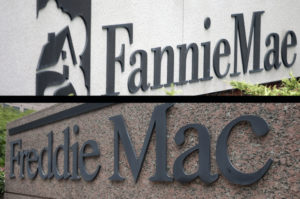 OLDWICK: As more of Fannie Mae and Freddie Mac’s mortgage risks continue to make their way to the reinsurance market, AM Best has published tables of net capital charges associated with a select group of transactions from these government-sponsored enterprises’ (GSE) credit risk transfer (CRT) programs.
OLDWICK: As more of Fannie Mae and Freddie Mac’s mortgage risks continue to make their way to the reinsurance market, AM Best has published tables of net capital charges associated with a select group of transactions from these government-sponsored enterprises’ (GSE) credit risk transfer (CRT) programs.
These tables also highlight some of the key components of the factor-based method used to calculate net capital charges in the Best’s Capital Adequacy Ratio (BCAR) model. This is the third report on net capital charges for a select group of CRT transactions.
U.S. mortgage insurance exposures, which as a product line had been relatively insignificant for reinsurance companies, today have become pronounced in some reinsurers’ lines of business.
The GSEs began transferring mortgage credit risk to the reinsurance market around 2013 through their credit risk transfer programs—Freddie Mac through its Agency Credit Insurance Structure (ACIS) and Fannie Mae through Credit Insurance Risk Transfer (CIRT). As of June 2020, GSEs had transferred approximately $27.8 billion of initial limits to the reinsurance market.
The Best’s Special Report, “Net Capital Charge Tables for ACIS/CIRT Reinsurance Transactions (July 2020 Update),” notes that net capital charge is represented as B5m (Mortgage-related Net Loss and LAE Reserves Risk) in the net required capital formula that is part of the BCAR. AM Best’s determination of a reinsurer’s net capital charge is based on unexpected losses and premiums associated with the GSEs’ CRT programs, and takes into account each reinsurer’s portfolio of ACIS/CIRT transactions.
The rising mortgage delinquency rates resulting from the COVID-19 pandemic may cause triggering for the ACIS/CIRT transactions. However, the triggering will not affect AM Best’s net capital charge calculation as it already assumes stressed scenarios in which trigger events are in place for each transaction. AM Best expects there will be higher realized mortgage losses which would erode at least a portion of the first loss layers in the transactions and possibly the upper layers as well.
AM Best is publishing the net capital charge tables semi-annually, using the most current performance data available from the GSEs’ websites. For this report, approximately half of the 105 ACIS/CIRT transactions effective through June 2020 have been selected.
Future publications of the net capital charges will be dependent on the continued timely availability of the ACIS/CIRT data from the GSEs, among other factors.
To access the full copy of this special report, please visit http://www3.ambest.com/bestweek/purchase.asp?record_code=299607